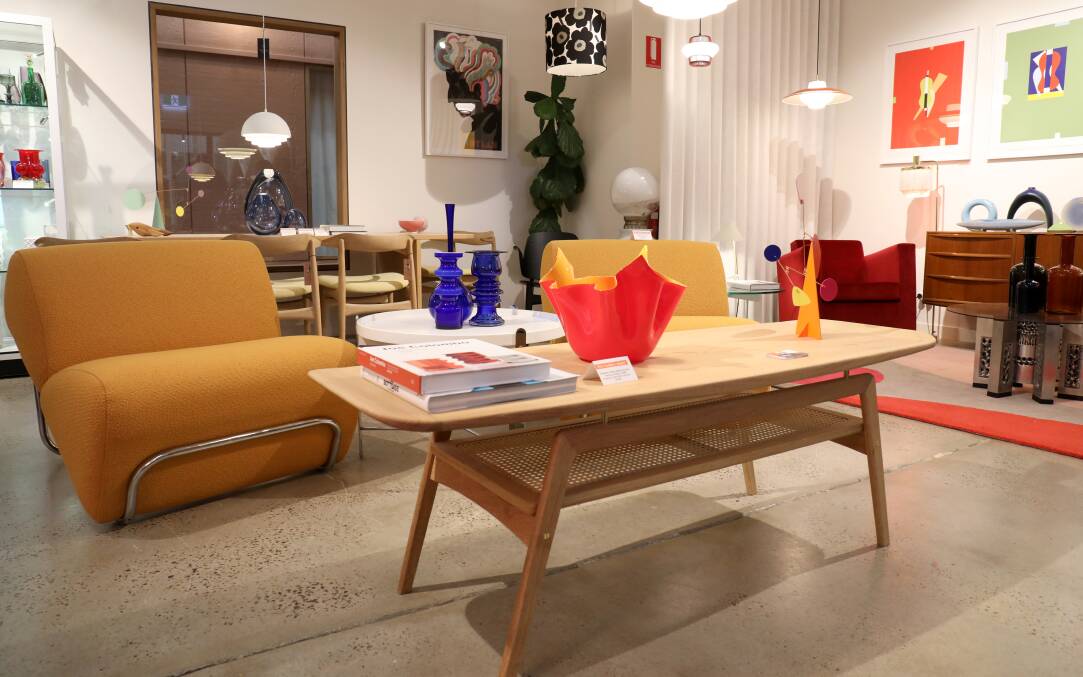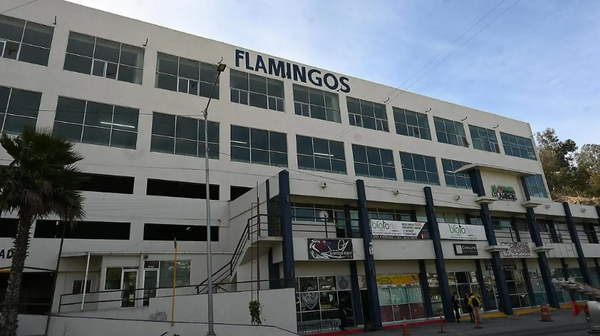Walking into the Snap Collective Design Centre in Fyshwick is like stepping into a furniture showroom of the 1960s.
Teak sideboards with delicate legs are interspersed with neat dining sets with colourful chairs and desirable upholstered armchairs.
Mid-century modern furniture is in hot demand and business partners Paul McInnes and Alex Csavas are happily riding that wave.
The pair have been longtime collectors and are passionate about furniture of the 1950s, '60s and '70s.

They each have their own businesses - McInnes runs The Modern Object in Dairy Road, while Csavas runs So Last Century MCM online - and in November took the leap to open a physical retail space.
Customers tend to have a strong reaction when they step into the showroom for the first time.
"They are wowed. A lot of people walk in and ... their mind is blown," Csavas says.
Snap Collective imports furniture and objects from the United Kingdom through dealers to avoid the fraught online secondhand market. McIntosh dining suites and G Plan coffee tables are particularly sought-after pieces, as are the iconic Featherston armchairs.

"The approach we take is that we select things that we personally like, that we have a connection to, and in a sense we feel like we are rehoming things," McInnes says.
"They are things that we enjoy and we are sending them back out into the world for other people to enjoy as well."
The customers coming through the door vary widely in age and living situations. Some are as young as 18, setting up their very first home and looking to invest in functional furniture that will last.
Some are buying a wedding gift for a lucky couple, a piece that will become a family heirloom.
Others are older, perhaps downsizing or regretting they gave away all of their best furniture in the '90s when mid-century design was not in fashion.

McInnes says mid-century design has an enduring appeal.
"It's not just because of nostalgia. That certainly plays a really strong part, but I think that the scale, the shapes, the colours work particularly well with contemporary living and especially with the move towards apartment living, we find that that is really part of its ongoing appeal," he says.
"We find that in a new apartment people are looking for pieces with patina and texture. They don't want everything to be hard and shiny and new."
It's particularly fitting that Canberra, a city that boomed in the mid-century period, is having its new apartment blocks kitted out with mid-century furniture as millennials deepen their obsession with teak furniture and record players.
Canberra Modern creative director and co-founder Amy Jarvis said Australian National University's University House was one of the first places to see the Bauhaus theory of design realised, where the architecture and furniture work together for a unified design.





Fred Ward designed many pieces for the university - from bookshelves to dining tables - which are now highly desirable.
"With the ANU, the furniture was beautifully designed, especially the upholstery, to see and mimic the colours of the landscape in Canberra, [with] beautiful sage greens and earthy tones, mustard yellows, deep brown oranges," Ms Jarvis said.
She's delighted that the next generation has an appreciation for craftsmanship and quality materials and are willing to invest in a piece that will last for many years.
"During the '90s and the '80s they were kind of just being thrown away in a lot of cases. So that's when plastic furniture, laminate furniture became really popular and there wasn't as much value placed on that beautifully designed, handcrafted timber furniture.
"But certainly more recently, it's become highly valuable and highly sought after and if you ever see it listed, you'll sometimes be surprised at how much these individual pieces can fetch."
Next door to Snap Collective, Canberra Antiques Centre owner of 19 years Doug Mulley said he still has a decent trade in traditional antiques, pieces from the 1930s or older, but vintage furniture sales are very strong.

Mulley said people are driven towards brands that their grandparents had, such as Singer sewing machines or Parker furniture.
"That's pretty much what drives this business, it's nostalgia," Mulley says.
"Parker furniture, they were popular in the '60s and '70s. It's what most grandmas had, I guess. Even though there's lots of other better designers out there, Parker seems to be popular. I put it down to that reason: a direct connection."
Mulley has decided to retire this year and is looking for a buyer with the passion to keep it going.
Despite the tough economic times, business is steady. Part of that is a move away from fast furniture.
"I can honestly say without any greenwashing, this would have to be the most green industry on the planet," Mulley says.
"Almost everything we sell is recycled, it's used, it's been loved, it's secondhand, it's fabulous, and it's out there again to go around another generation. That is really green."
McInnes says customers are very conscious of sustainability when they choose mid-century pieces.

"Sustainability is a really important part of what we do and we find that people, and particularly with furniture, are buying things for the future.
"They're very conscious of the whole idea of fast furniture and are wanting things they can buy and keep and hand down. So it's fantastic. We really love that and it's a great part of what we do here at Snap."
The pandemic sparked a renewed interest in mid-century pieces. People made snap purchases of furniture online, sending prices soaring.
Csavas says a Chiswell sideboard in perfect condition would have cost $1400 pre-pandemic but now could fetch up to $3800.
"People that aren't dealers were selling things trying to be dealers and it was just rubbish. I can't sell a rubbish sideboard to someone because it's my reputation. People got burned and then now with interest rates, people are more selective."
He expects the popularity of mid-century furniture won't come to an end before he retires. But Mulley thinks the interest will eventually fade.

"It's been strong for a good while now. That will change as the demographics that are into that, age.
"They will drop off, literally and figuratively I suppose, but they'll move on or they'll stop buying because they have enough and that's where the wheel turns, you see."
The key to getting the mid-century look right? Don't be a slave to the era. Be playful and make it work for you, McInnes says.
"We encourage people to mix styles, not to necessarily have a space looking like a time capsule. I think that's what makes an interesting space: a mixture of styles and textures and periods."
Where to shop for vintage furniture in Canberra
- Dirty Janes, 80 Collie St, Fyshwick
- Down Memory Lane, 34 Geelong St, Fyshwick
- Canberra Antiques Centre, 37 Townsville St, Fyshwick
- Snap Collective, 35 Townsville St, Fyshwick
- Designer Op Shop Emporium, 1 Lyell St Fyshwick







